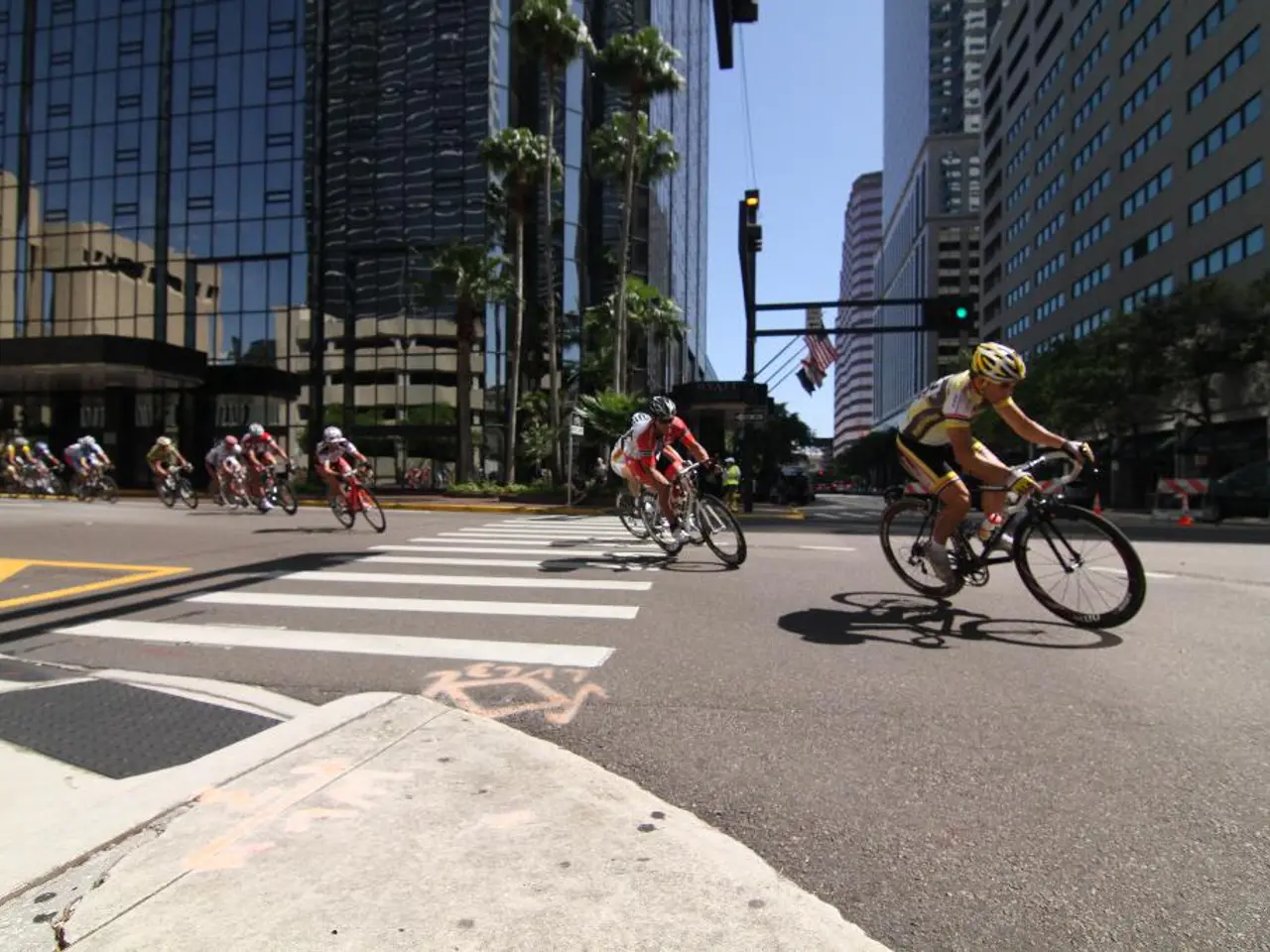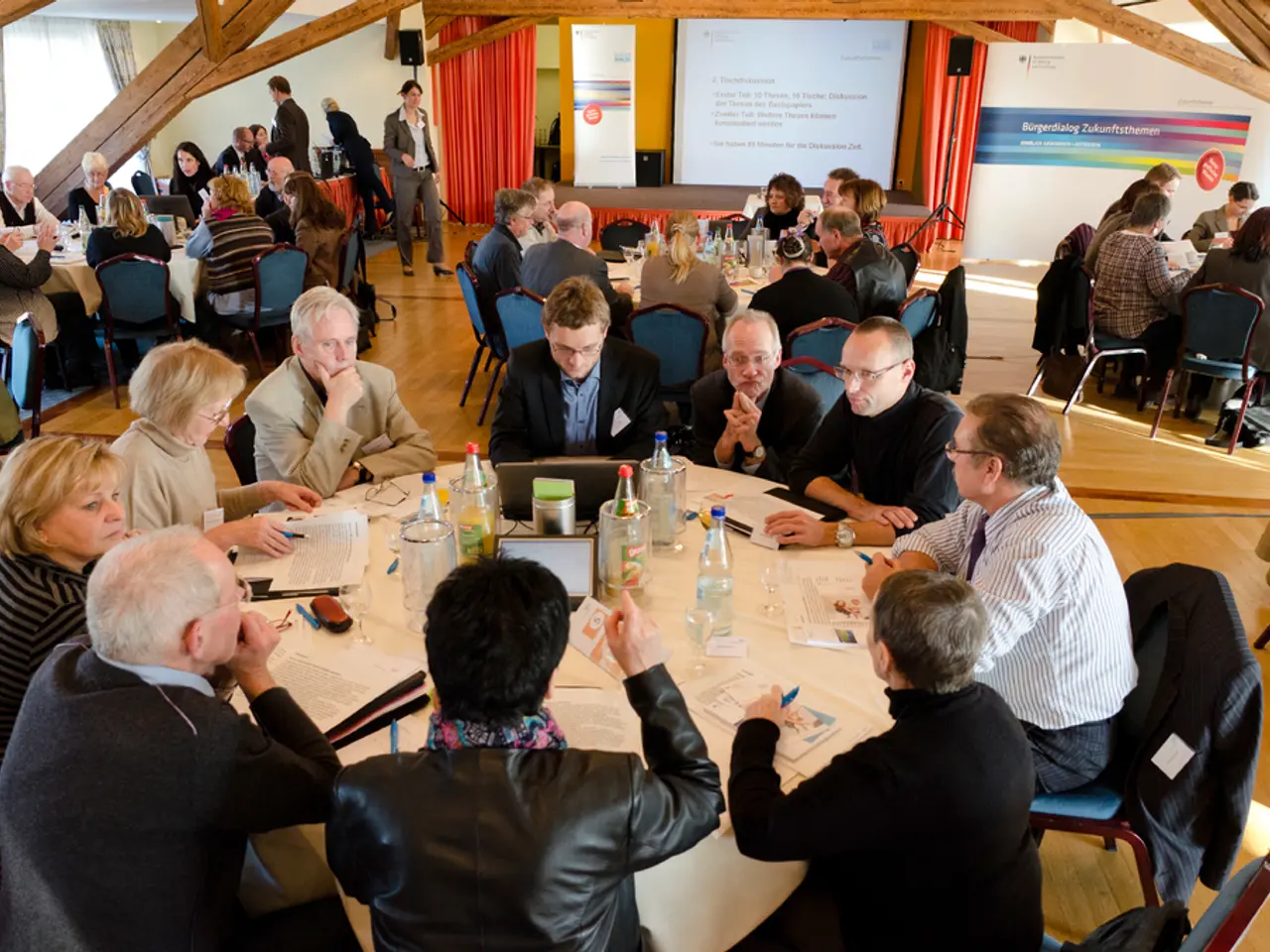Enhancing Pedestrian and Cyclist Safety at Intersections: Strategies for Bicycle-Oriented Design
Reducing vehicle speed is crucial in decreasing conflicts at intersections, a common site for cycling accidents. However, a phased traffic light system, with its multiple phases, can lead to longer waiting times, increasing the risk of people running red lights or getting tired of cycling due to long waits.
Intersections play a significant role in shaping people's perceptions about cycling. Wider traffic islands may be necessary at intersections where a large number of cyclists is anticipated. Ensuring that intersections do not become a barrier to cycling is vital for any city wanting to increase the number of people riding a bike.
Traffic planners should consider the diversity of cyclists, including those riding for work, leisure, and those using adaptive bikes. The choice of intersection design depends on factors such as junction layout and speed and volume of traffic.
One crucial element in designing bike-friendly intersections is to make bikes visible. This can be achieved by minimizing corner radii to reduce crossing distances for cyclists and pedestrians, using channelized right turn lanes with right-angle entries to lower vehicle turning speeds and improve driver visibility of cyclists and pedestrians, and incorporating raised crosswalks to encourage motorist yielding at crossings without signal controls.
Protected bike lanes, clear signage, and good road maintenance also play a significant role in enhancing cyclist safety. These measures reduce collision risks, improve driver awareness, and avoid hazards like potholes or debris.
From a broader urban design perspective, connectivity of street networks with frequent intersections can support multimodal mobility including cycling, while traffic calming measures contribute to creating safer, more comfortable environments for all road users. Cities with integrated bike infrastructure such as continuous bike lanes and connections between neighborhoods foster safer cycling.
Designing intersections that promote lower turning speeds and better sight lines helps enhance safety for bicyclists. Maximizing visibility and clarity are crucial for reducing fatalities at intersections and increasing cycling comfort. In fact, over 70% of lethal or serious cycle accidents happen at intersections.
Designing safer intersections for cyclists is essential to reducing fatalities. Resources such as NACTO's 'Don't Give Up at the Intersection' guide and the Danish Cycling Embassy's 'Intersection Solutions' provide detailed information on cycling intersections. Remember, the goal is to create intersections that are not only safe but also comfortable and inviting for all cyclists, from the casual rider to the daily commuter.
[1] Urbanism Next, University of Oregon. (2019). Designing Intersections for Cycling: A Guide for City Planners. Retrieved from https://urbanismnext.uoregon.edu/wp-content/uploads/2019/05/Intersection-Design-Guide.pdf
[2] NACTO. (2018). Urban Bikeway Design Guide. Retrieved from https://nacto.org/publication/urban-bikeway-design-guide-2nd-edition/
[3] Newman, J., & Kenworthy, J. (2015). Sustainability and Cities: Overcoming the Environmental Challenges of Urbanization. Retrieved from https://www.elgaronline.com/view/9781783471131/9781783471131.xml
[4] People for Bikes. (2018). The Green Lane Project. Retrieved from https://peopleforbikes.org/our-work/green-lane-project/
The design of intersections can significantly impact diverse cyclists, including those from the finance industry commuting to work, leisure cyclists enjoying home-and-garden excursions, and adaptive bike users participating in lifestyle activities. To create a safe, comfortable, and inviting environment for these cyclists, urban planners should consider factors such as junction layout, speed and volume of traffic, and the use of visibility-enhancing measures like reduced corner radii, channelized right turn lanes, and raised crosswalks. By following guidelines like those presented in the guide 'Don't Give Up at the Intersection' and those provided by the Danish Cycling Embassy's 'Intersection Solutions', cities can improve the safety and usability of intersections, fostering cycling as a mode of transportation in various sectors of urban life. [1,2,4]




